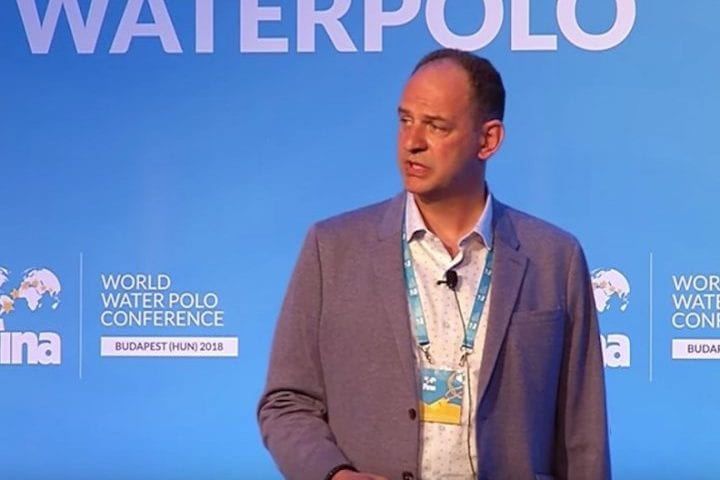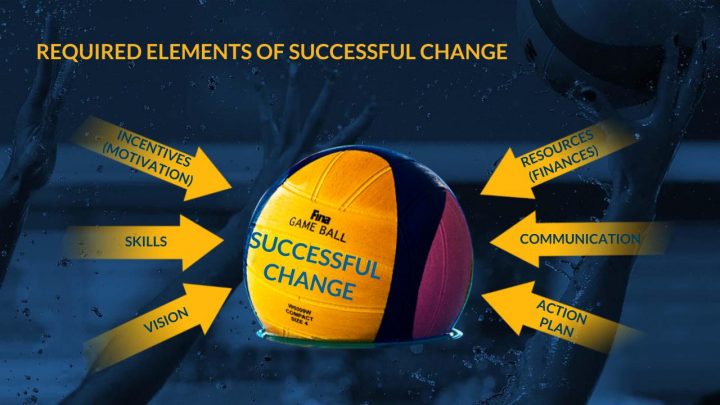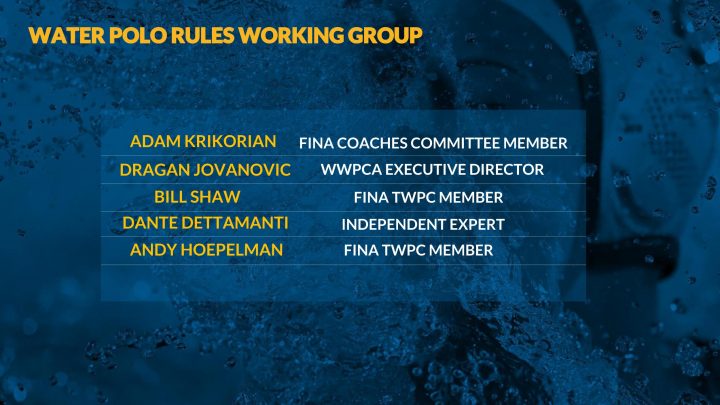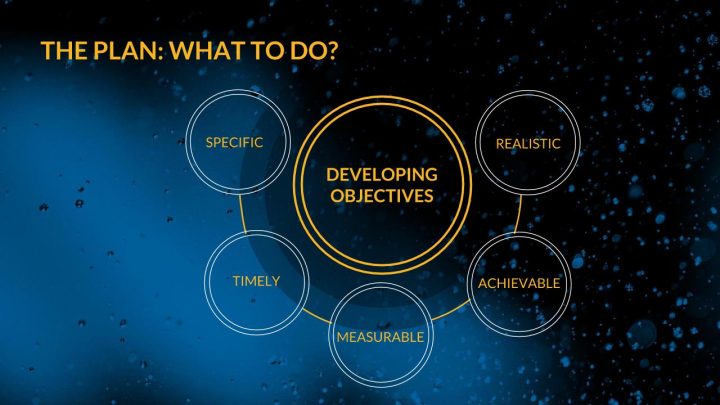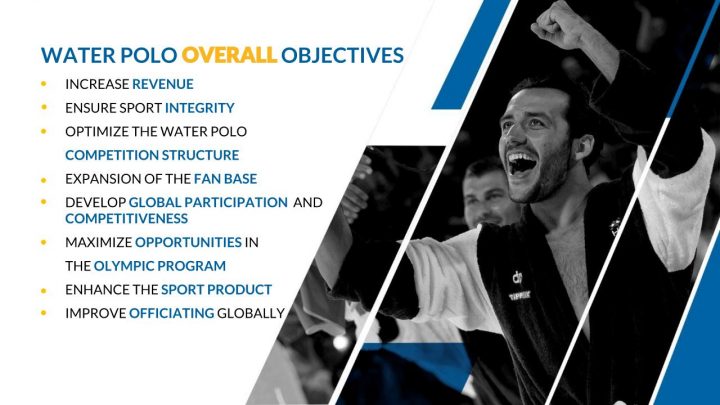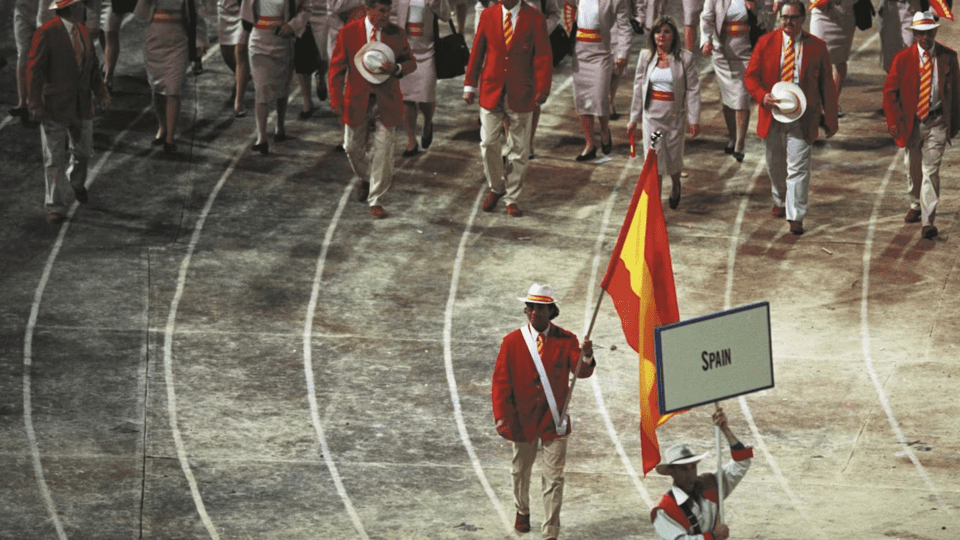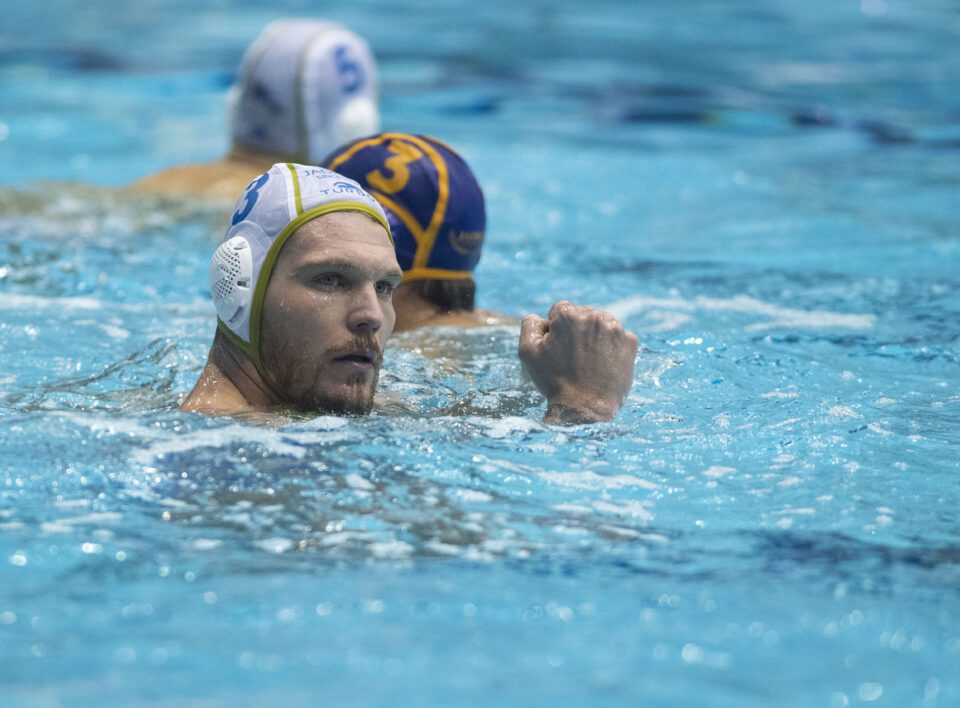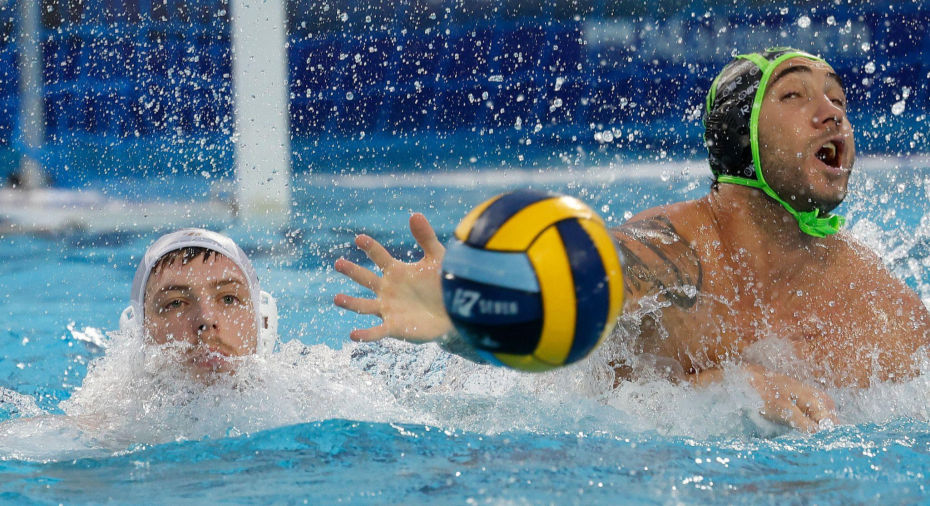Following the events of FINA’s Word Water Polo Conference in Budapest, we talked to Dragan Jovanović, the Executive Director for the World Water Polo Coaches Association.
About the World Water Polo Coaches Association (WWPCA)
As one of our primary goals is to connect the global water polo community, can you briefly present the WWPCA? What do you do, what are your goals, who can become a member?
The WWPCA started with its work about three years ago, although this is not the first time that coaches organized themselves this way. But this time, we have learned from our previous mistakes and worked some things differently.
The timing of this organization was perfect because now some great coaches from the water polo world have the time to devote themselves to work in the organization. With that in mind, we are pleased with the results so far, and we want more coaches to join the association.
Our goal is to create an organization in which the coaches can exchange opinions, talk about the problems in water polo, and discuss the potential improvement of the coaching profession. Also, we are trying to find a way to elevate water polo to a higher level and help to educate new coaches. All in all, we want the coaches to have a voice.
We do not want to make the essential decisions for the sport in general, nor do we intend to in the future. However, we do want to voice our concerns and the ability to suggest ideas we drew from our experience.
Every coach in the world can become a member. It only takes a registration through our website, which automatically makes you a member of our association.
We are working on a partnership program at the moment. We would like to open an opportunity for local coach organizations from all countries and enable those coaches to become part of the world organization. In case they agree upon a partnership, all their members would automatically join the WWPCA.
We think that we are very close to achieving that goal. In a few weeks, we hope to make a partnership with one of the leading countries in the world.
The Conference in Budapest
What are your general impressions of the latest water polo conference? Did it meet your expectations?
As for the conference in Budapest, I have to emphasize, which I repeatedly do, that the event itself and its prelude over the last 4-6 months have overcome all of my expectations. And I say that with a grain of salt because there were conferences and meetings before where they discussed modernization, organization, and popularization of water polo, but the mentioned themes never turned into reality.
This time, the conference was remarkable, and I have to point out one more time that from the view of the water polo community, it has been included in the decisions. I’m not only talking about the rule changes as they are just one (undoubtedly important) aspect of water polo that needs changing.
If there will be no promotions, financing, marketing campaigns and audiences, if there are no event calendars that are available four years in advance, there won’t be any progress in water polo. This also includes problems like related competitions and synchronizing future events, the media, and their coverage. Also, we need the media promotions of the players and star coaches as we see in other sports.
My impression of the whole organization is remarkable for the reasons I mentioned before. This means the inclusion of the complete water polo community is a must.
Furthermore, there is the vision and a promise from FINA to pay more attention to water polo. The passion in the work of people involved in water polo is astounding, especially with people like Andrey Kryukov, who exceeded all my expectations. I must say that I am impressed with his work ethic and willingness for change to make water polo a more serious sport.
This man works 24 hours a day for water polo, and I am happy for that. Anybody who dedicates that amount of time to the water polo world, trying to make good changes, will always have my respect and I will personally support them.
At this point, I think Andrey Kryukov is doing an incredible job and I’m sure he’s going to continue with his work.
Is there any segment or a theme that you would like to highlight or that was particularly impressive to you?
Indeed, I was most concerned about the lecture I was doing. Not because I held it, but because it was directly connected to the problems of water polo, as well as the analysis of the current state of the sport. Also, I addressed the current state of the rules and their effect on the condition in the pool.
I was sad that I couldn’t present the analysis in its entirety due to the lack of time — we needed to focus on some other topics because of a very tight schedule. Surely, that part was very interesting for the water polo workers, as well as the new rules themselves.
This might be the correct relationship between water polo and its people, even though my opinion is that this is wrong due to a lot of segments that need changes. For the water polo rules to work, we need those changes, and we need them to benefit the sport.
The second lecture that was very interesting was the one by Terrence Burns, the Executive Vice-President of Global Sport at Engine Shop Agency. He held an outstanding presentation about creating a brand and I recommend it to everyone. I think it’s available on FINA’s Youtube channel.
His was a presentation which took a good look at current times in which we live in from a branding perspective. The presentation was very simple and of the highest quality so everyone was able to understand it. From the analysis and comparison with other areas, it was clear to understand what a brand is.
Apart from this, I would also like to highlight Pere Miro’s presentation, the Deputy Director General of the International Olympic Committee. In a really fun way, he presented some of the important demands of the International Olympic Committee. Also, he talked about the conditions for a sport to remain in the Olympic program.
The New Suggestions
Can you clarify the methodology of coming up with these suggestions and who has been involved in creating them?
The process of changing the rules began in December with our meeting in Barcelona. There were 15 of us — the coaches, judges, representatives of TWPC and others — and we discussed the issues of water polo. Besides that, we came up with some ideas for the changes of the rules we agreed upon.
During this meeting, we set up six goals, which meant that every rule must meet at least one of the set goals. That was our methodology of creating new rules. I must point out that I doubt that all 19 proposed rules changes we came up with in the end will pass. Not because someone wants to block them, but simply because there are certain reasons to oppose them.
As the first step, the rules must be precisely defined. The suggestions made in Budapest were just ideas and drafts of some of the rules we wish to change. Our next step is to establish and formulate them individually so that everyone fully understands their meaning. Then we have to determine exactly when and on which competitions they will be tested.
I believe that the TWPC has already determined which competitions will act as a trial for these rules – more precisely, which rules will be tested in a shorter and longer period.
In Barcelona, we wrote down the above-mentioned goals and proposed changes to the rules. We created a working group what looked over the proposed rules with great detail before putting it on paper.
In the beginning, there were about 50 different rules, and they all went through the filters of our groups which reduced them to about 20. These 20 rules are going for a test ride and a minute analysis, so we will see if they pass. That’s really important because the rules need to be in coordination between them, and in coordination with the current state of the game.
Some of them were already tested in the past. But I doubt that the submitted rules would work together, especially when added to the already existing ones. We always have to keep that in mind so that we do not make mistakes and find ourselves in a situation such as this one.
For example, we had a 7-meter foul (a 10-year-old rule) and then we moved it to 5 meters a few years ago, and now we’re back to 6 meters because the 5-meter rule ruined the game. In conclusion, these are the things we need to learn from.
Can you explain a certain rule to our readers? It goes like this: “A personal foul, but without expulsion, is assigned to the defender on the center forward, if he doesn’t have the possession of the ball.”
It is a suggestion for the back center — I must point out there was a mistake in the formulation because it is not a foul for the center forward, but for the back.
One of the problems in the game is a the crude play on the center position without the ball. With the ball around, that’s a different story. Considering that water polo is a rough, and sometimes brutal game, we have to find a way to stop it without increasing the numbers of exclusions. Because we already have a lot of those. Also, we need to worry about not giving the advantage of an extra player to the attacking team.
The Plan for the Rules
What is the plan for testing the rules and when can we expect some of them to be in big competitions?
The plan is to clean up the current state and to make two packages. One will consist of rules which do not require long-term testing and which have a decent chance to be accepted at the FINA Congress in October or November this year. These rules would go on trial right away. Not in the middle of the season, of course, but as soon as there is a chance for it. It’s realistic to expect them to be implemented at the Tokyo Olympics.
The second package would contain rules which require much more time to test in the games. Firstly, to see how these rules work in reality so we can eventually make some adaptations to them and see if they are consistent with the other rules.
In conclusion, this is the very beginning of the modernization of water polo.
In Budapest, at the presentation of hockey rules which was done by Danny Kurmann from IIHF, we have also seen how he emphasized certain rules. He pointed out that the submitted rules are an “ongoing process” and that they are evaluated every year and adapted to the current state of the sport.
I would love to have such a situation in water polo, too. We discussed t exact thing in Budapest and concluded that this is the plan for the next 20 years. The process of modernization should be ongoing. We have to follow the trends in other sports too, especially now, in the 21st century.
Apart from the proposal to test the new rules, are there any other themes you discussed?
In addition to the changes in the rules, it is essential to deal with the existing rulebook because at the moment, it is in a poor state and has many problems.
On one hand, there are parts of the rules that appear in several different points. On the other, we see rules applied that do not exist officially. The best example is the rule for an ordinary foul: The rulebook does not clearly define what this foul is or in what situation it is considered a foul.
That means we first need to determine and write down exactly what a common foul in the game is.
This problem was one of the topics discussed in Budapest. It was compared with other sports, and as an example, we have the basketball rulebook which offers ten pages dedicated to the ordinary foul.
In our rules, we lack these definitions. The rules were written in a rush and that is our biggest problem.
Thirty years ago, an ordinary foul was a simple touch on the opponent, and today it is about reaching for the head or the neck of the opponent. Ultimately, we have to define this as soon as possible.
The Future of Water Polo
Is there a timeline of clearly defined steps and responsibilities? For example, is there a person in charge of getting a certain job done by a defined date?
The general conclusion is that water polo must move forwards. We need to modernize it in all segments and more people must be involved in the process.
As for FINA’s conclusions, and as far as I understand, they want to focus on water polo more than ever, which is a really good thing.
So, here we come to the two most important conclusions from Budapest. And I would like to point out that, at this moment, we have to put a lot of effort, work and thoughts in them. We need to create a strategic plan since it’s simply impossible to do everything overnight. We have to be focused on all aspects of water polo modernization.
I would recommend to all who are involved in this process to set their priorities precisely. In the next two years, until the Tokyo Olympics, we should set two or three priorities which have the best chances of being completed.
When I see how much work we have to do, I’m worried about the people in the process. There is a chance that they will get lost in it, which would slow down the process. We have to keep up with the work to keep water polo progressing.
So, I repeat, the strategic plan should contain clear goals and precise deadlines.
And that is the first step we must do because it will take a lot of time. Believe me when I say that we have been waiting for this almost 20 years. We wanted to create such a situation to show the others there’s no point in rushing — we would only make mistakes, and that will lead to the downfall of this project.
That is why I want a compelling analytical approach to creating the strategy, goals, and priorities in a serious way. No matter how long it will take.
We would like to thank Dragan Jovanović for this extensive interview and we hope the water polo community will start modernizing as soon as possible. Make sure you follow Total Water Polo on Twitter and Facebook for the latest news around the globe!



